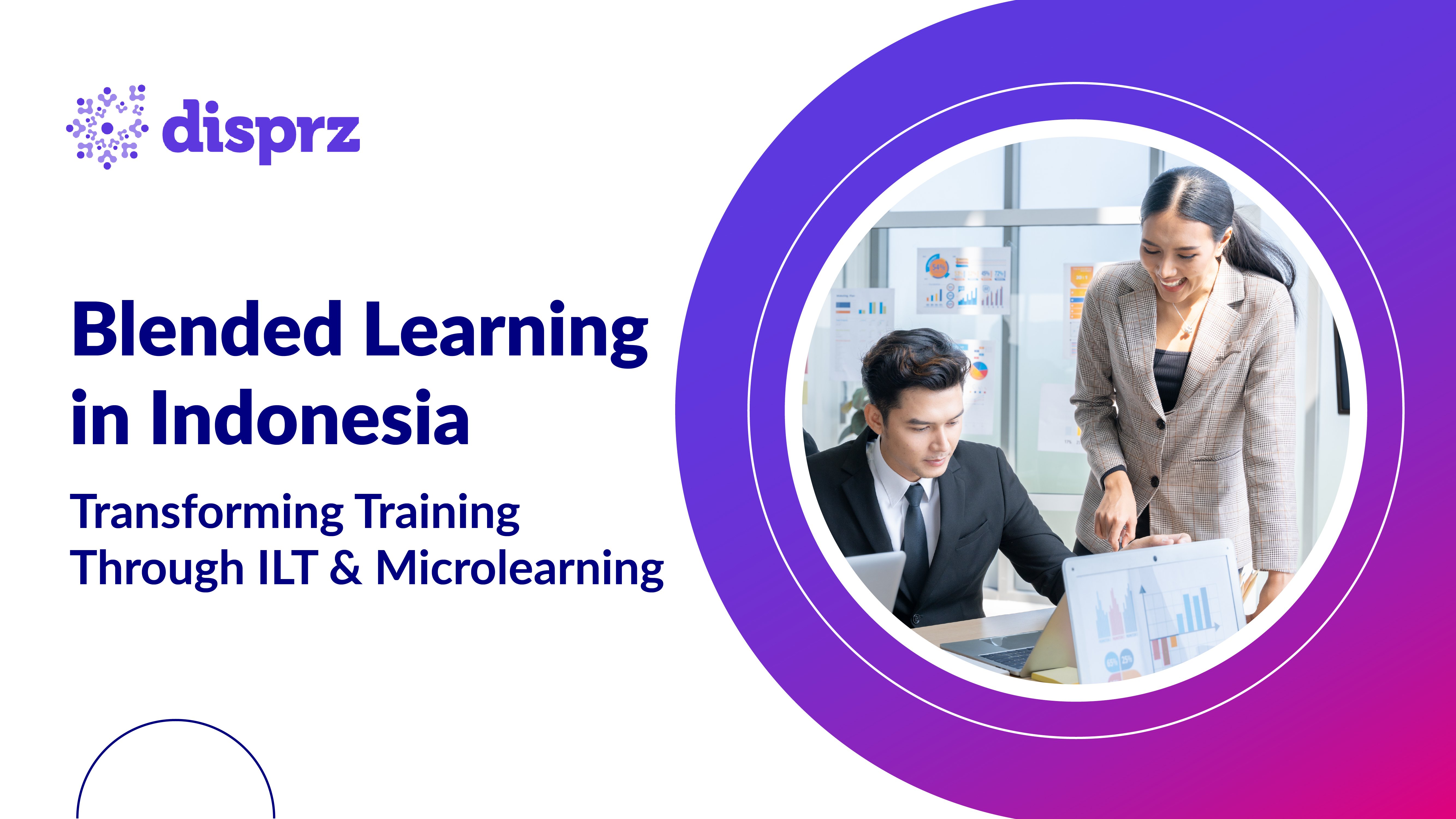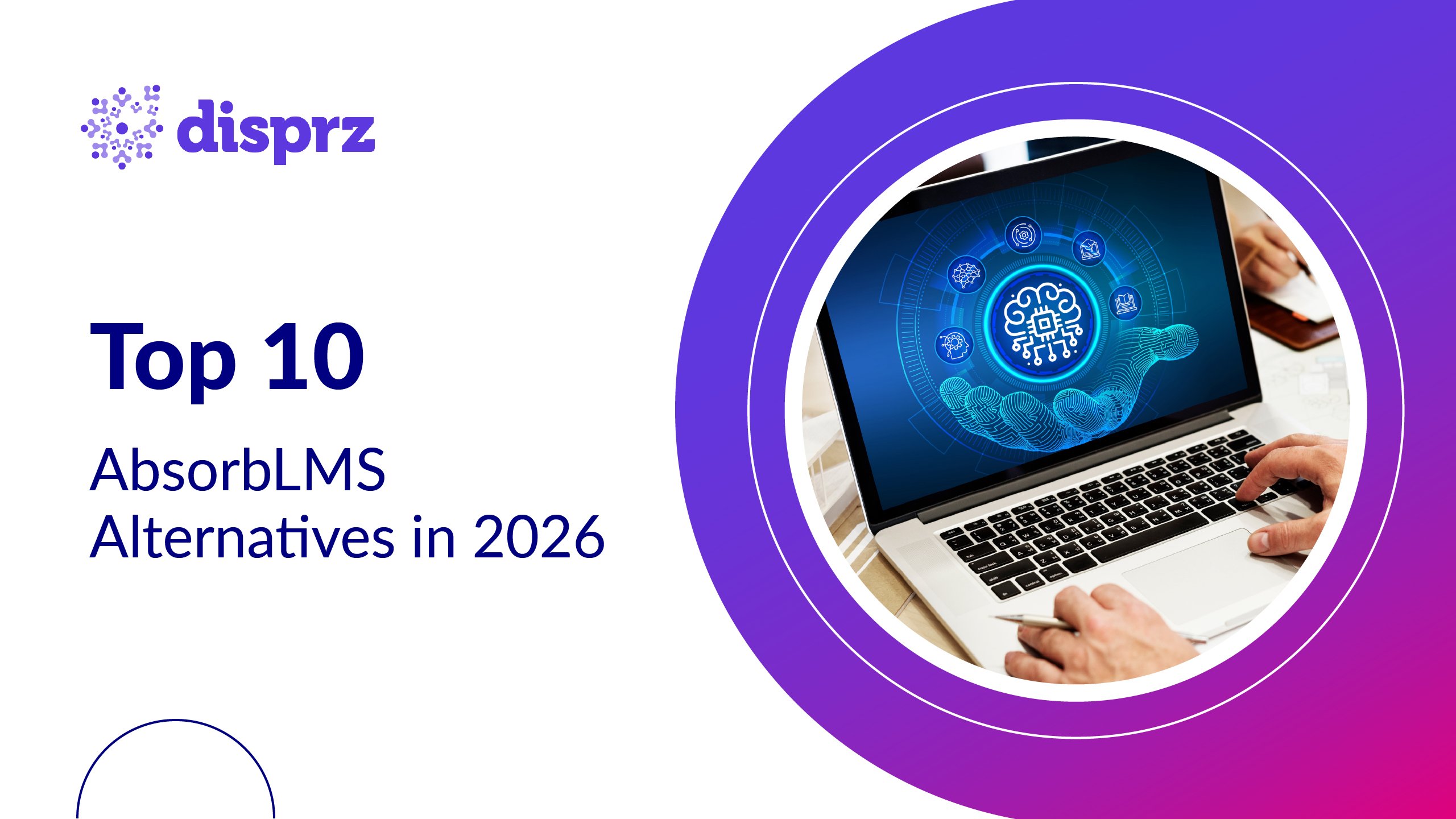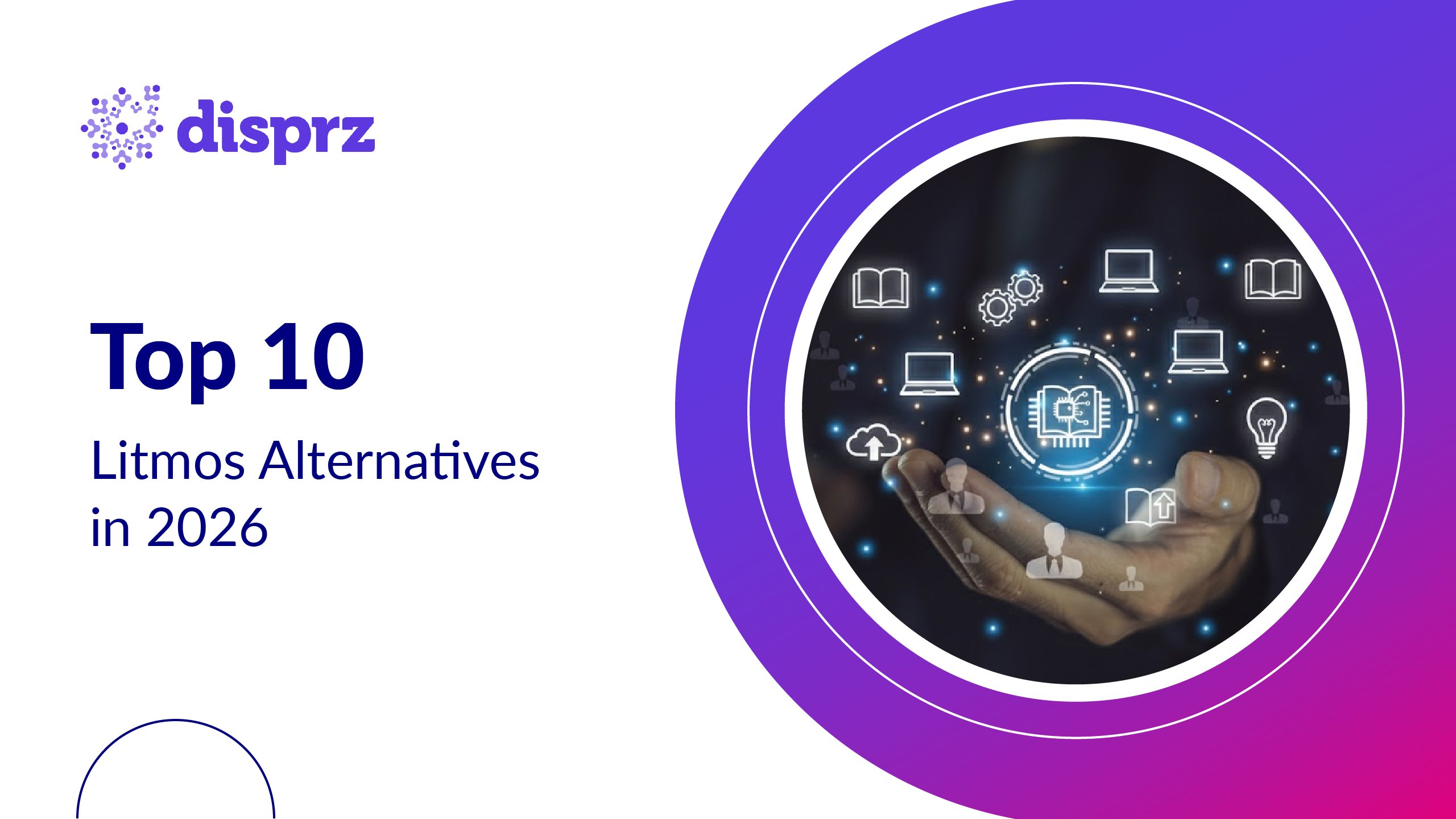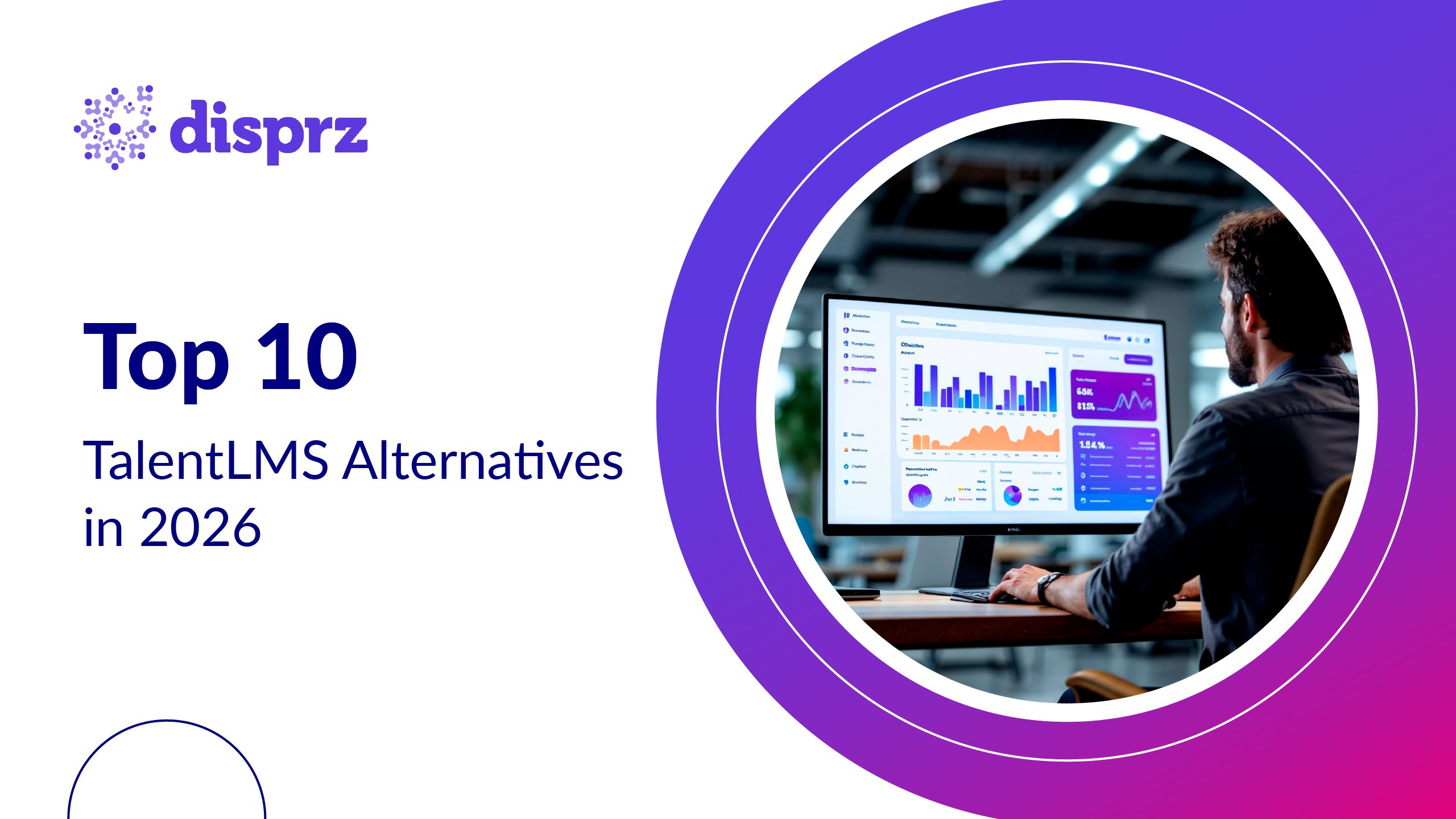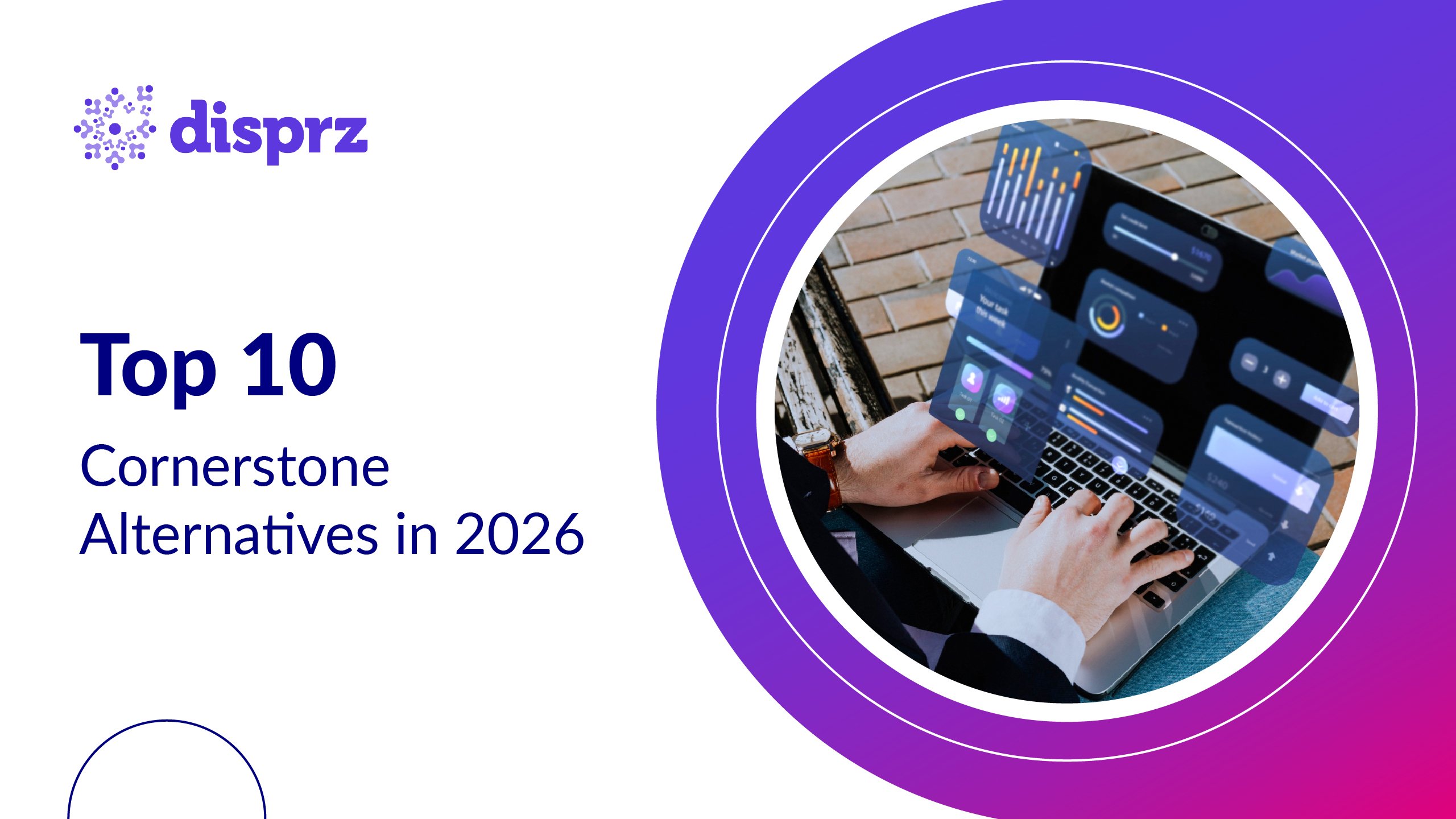Workplace learning in Indonesia is undergoing a significant transformation. As organizations digitize and employees work across offices, factories, and remote sites, the old model of full-day classroom training is losing its grip. Yet, instructor-led training (ILT) remains important, especially in sectors such as banking, retail, and manufacturing, where real-world practice and face-to-face interaction continue to matter.
That’s where blended learning comes in. Instead of replacing ILT, organizations are strengthening it with short, digital learning moments, known as microlearning. When supported by a learning platform, these bite-sized lessons keep employees actively reviewing key concepts, practicing skills, and applying knowledge long after the classroom session ends.
This blend of in-person and digital learning in Indonesia is proving powerful. Trainers can focus classroom time on discussions and simulations, while microlearning keeps the momentum going once employees return to work. Together, they create a continuous learning loop, one that fits modern work schedules and helps knowledge stick.
Across Indonesia, this approach is gaining ground. From large enterprises to growing startups, organizations are seeing how blending ILT with microlearning builds stronger, more confident, and more adaptable teams.
Why ILT Alone Isn’t Enough in Indonesian Enterprises
Instructor-led training (ILT) alone cannot meet the needs of modern Indonesian workplaces. While it is effective for hands-on practice and building teamwork, it struggles to scale, retain knowledge, and consistently reach all employees. Relying on ILT alone will start to show clear limitations.
-
It is hard to scale. Running the same classroom format workplace training session for teams across multiple cities takes time, effort, and coordination. Trainers, venues, and schedules must be repeated, which slows down learning for larger workforces.
-
Employees forget quickly. One-off workshops may feel impactful in the moment, but without reinforcement, most knowledge fades within weeks, reducing the real value of training.
-
It costs too much and takes too much time. Travel, venue booking, and hiring trainers make frequent ILT training expensive. Small and mid-sized organizations often cannot run sessions often enough to meet learning needs.
-
Not everyone can attend. Shift workers, field staff, and remote employees often miss sessions, leaving some employees without critical skills or updates.
-
It is difficult to measure results. ILT rarely provides data on whether employees apply what they learned. Without clear metrics, it is hard for L&D teams to track ROI or identify skill gaps.
-
Learning momentum fades fast. Even motivated learners may lose touch after the session. Without follow-up, skills are rarely applied consistently on the job.
Instructor-led training is valuable, but it cannot meet all modern workplace learning needs on its own. Combining ILT with microlearning and other digital tools helps reinforce skills, increase reach, and make employee training in Indonesia more effective.
Benefits of Adding Microlearning to ILT
Microlearning enhances ILT by reinforcing knowledge and improving application. Short, focused lessons help employees retain what they learn in the classroom and apply it effectively in their day-to-day work.
-
It provides just-in-time refreshers. Employees can access targeted lessons exactly when they need them - before client meetings, on the shop floor, or while using new tools. This ensures learning is relevant and actionable.
-
It increases engagement and retention. Bite-sized modules are easier to complete and less overwhelming than full-length sessions, which leads to higher completion rates and better long-term recall.
-
It supports frontline and remote workers. Mobile-friendly microlearning allows shift staff, field teams, and remote employees to participate without disrupting their schedules.
-
It enables cost-effective scalability. Once developed, modules can be deployed across multiple teams and locations without repeating expensive in-person sessions.
-
It fosters continuous learning. Employees engage with short lessons regularly, turning ILT from a one-off event into an ongoing, practical learning journey.
Integrating microlearning with ILT creates a structured, flexible, and measurable learning experience that drives stronger engagement, retention, and business outcomes.
Strategies for Blended Learning in Indonesia
Blending ILT with microlearning works best when it’s planned, not random. Indonesian enterprises are experimenting with simple but effective strategies to make learning more continuous, accessible, and measurable.

-
Pre-training micro modules. Give employees short lessons before the classroom session. This builds basic knowledge and prepares them to ask questions, participate actively, and make the in-person time more valuable.
-
ILT for deep-dive sessions. Use instructor-led training to cover complex topics, run simulations, or facilitate discussions. This is where learners practice hands-on skills and explore ideas that need human guidance.
-
Post-training reinforcement with mobile learning. After the classroom, follow up with short, targeted microlearning on mobile devices. Quick quizzes, video clips, or step-by-step guides help employees remember key points and apply skills immediately at work.
-
Using LMS dashboards to track outcomes. Learning management systems (LMS) provide visibility on who completed modules, scores on assessments, and engagement patterns. L&D teams can use this data to measure the impact of blended learning and identify areas needing attention.
By layering learning before, during, and after ILT, organizations create a continuous loop. Employees stay engaged, skills stick, and training investments deliver measurable results.
Common Mistakes in Blended Learning & How to Avoid Them
Blended learning works in theory, but in practice, many organizations stumble in ways that feel very familiar to L&D teams in Indonesia:
Too many modules, too little time. Employees get 5–6 microlearning videos in a week, but have no time to watch them. As a result, they skip content or feel frustrated.
-
Managers treat training as optional. If team leads don’t check in or reinforce learning, employees think it’s “just another task,” and engagement drops.
-
ILT sessions feel like information dumps. Trainers lecture for hours without hands-on practice. Learners leave with notes but no way to apply skills.
-
Digital content is irrelevant. Some modules use generic global examples or technical jargon that don’t fit local workflows, and it leads to frontline employees ignoring them.
-
No follow-up reminders. After a workshop, employees are sent a link to a microlearning module, but no one nudges them to complete it. Completion rates stay low.
-
Technical hiccups. Videos don’t load on slow connections, quizzes don’t work on mobile, or LMS dashboards aren’t intuitive. Small tech issues can kill adoption.
-
Over-reliance on metrics alone. Organizations track completions but don’t measure whether skills are actually applied on the job. The learning looks good on paper, but doesn’t impact performance.
-
One-off mindset. Training is run once a year for compliance or onboarding. There’s no continuous learning loop, so knowledge fades quickly.
Overcoming Challenges in Blended Learning
Blended learning brings clear benefits, but implementing it in Indonesia isn’t without hurdles. Organizations need to plan for common obstacles to make sure learning sticks and reaches everyone.

-
Device and internet access. Not all employees have reliable smartphones, tablets, or high-speed internet. Organizations can address this by providing offline-friendly content, shared devices, or lightweight modules that don’t require heavy data.
-
Manager buy-in and cultural acceptance. Some managers still see training as “time away from work.” To overcome this, L&D teams need to communicate the business impact clearly and involve managers in the learning process.
-
Tracking performance across ILT and digital. With multiple learning formats, it can be hard to measure results. Using a single LMS or dashboard that combines classroom attendance, microlearning completion, and assessment scores helps monitor progress and ROI.
-
Content relevance. Generic modules won’t stick. Learning must be tailored to local work contexts and business needs; otherwise, employees may skip or ignore it.
-
Sustaining learner motivation. Employees can start strong but drop off over time. Gamification, reminders, or recognition programs can help maintain engagement across the blended journey.
By anticipating these challenges and using practical solutions, Indonesian enterprises can make blended learning not only feasible but effective.
Implementation Roadmap for SMEs & Enterprises
Creating a successful blended learning program takes a step-by-step approach. Here’s a practical roadmap that Indonesian organizations can follow:
-
Start with pilots. Choose a small team or department to test blended learning. Focus on high-impact skills or compliance training to measure initial results quickly.
-
Design pre-training micro modules. Provide short lessons before ILT sessions to build foundational knowledge and prepare employees for active participation.
-
Deliver ILT for deep dives. Use classroom or virtual instructor-led sessions to cover complex topics, run simulations, and foster discussion.
-
Follow up with post-training reinforcement. Share microlearning content via mobile or desktop platforms to reinforce skills and knowledge right after training.
-
Scale through adaptive learning and analytics. Use LMS dashboards to track engagement, completion, and assessment scores. Refine content based on data to personalize learning for different roles or skill levels.
-
Tie results to business KPIs. Measure impact on productivity, compliance, skill adoption, and employee retention. Show managers how learning affects real outcomes.
-
Build manager involvement. Engage team leads in reinforcing learning, providing feedback, and recognizing progress to boost adoption and accountability.
-
Continuously improve content. Update modules regularly based on learner feedback, new business processes, and emerging skill needs to keep learning relevant.
-
Foster a culture of continuous learning. Encourage employees to keep engaging with microlearning modules, join discussion forums, and apply skills on the job.
Blended Learning Readiness Checklist
Before you launch blended learning, make sure you can:
.jpg?width=1600&height=905&name=Blended%20Learning%20Checklist@2x-100%20(1).jpg)
-
Set clear learning objectives that connect to business goals.
-
Prepare and test pre-training micro modules.
-
Design ILT sessions for hands-on practice and discussion.
-
Plan post-training microlearning or reinforcement activities.
-
Confirm that all employees have access to devices and content.
-
Get managers involved to follow up and recognize progress.
-
Use an LMS or tracking system to measure engagement and results.
-
Tailor content for different roles and teams.
-
Collect feedback to improve modules continuously.
-
Update content regularly based on learner performance.
Conclusion
Blended learning is helping Indonesian organizations make training more effective and practical. Combining instructor-led sessions with short, focused digital lessons allows employees to learn, retain skills, and apply them at work. The key is planning the journey carefully, preparing learners before training, reinforcing knowledge afterward, involving managers, and tracking results. Done well, blended learning turns one-off sessions into continuous growth and better performance for every team.
To see this in action, explore how Disprz LXP supports blended learning in Indonesia. Disprz helps organizations design, deliver, and measure programs that reach all employees and ensure learning makes a real impact.
FAQs
1) What is blended learning in Indonesia?
Blended learning in Indonesia combines traditional instructor-led training with digital learning tools such as microlearning, videos, and quizzes. The goal is to make training more flexible and accessible across offices, factories, and remote sites. Organizations use this approach to reach more employees, reinforce skills after classroom sessions, and improve knowledge retention. It is widely adopted in sectors such as banking, retail, manufacturing, and technology to build practical skills efficiently.
2) How does microlearning improve ILT?
Microlearning improves instructor-led training by providing short, focused lessons before or after classroom sessions. Employees can review key concepts, practice skills, and refresh knowledge on the job. This approach keeps learning continuous rather than one-time and helps learners retain information better. By combining ILT with micro modules, organizations can make training more engaging, practical, and relevant to daily work, especially for frontline or dispersed teams.
3) What LMS features support blended learning?
A good LMS for blended learning should track both digital and classroom activity. Key features include reporting dashboards, course completion tracking, quiz and assessment tools, mobile accessibility, and reminders for follow-up modules. Some systems allow managers to monitor team progress and adapt learning paths. Integration with microlearning tools and the ability to gather feedback also help L&D teams measure engagement and continuously improve the learning program.
4) How long should micro modules be?
Microlearning modules should be short and focused, typically between three and ten minutes. Each module should cover one key concept or skill to make it easy for employees to complete during short breaks or before applying new skills on the job. Short lessons help learners stay engaged, remember more, and apply knowledge quickly. Overloading a module with too much content can reduce effectiveness and decrease completion rates.
5) Is blended learning cost-effective for SMEs?
Yes, blended learning can be cost-effective for small and medium enterprises. While the initial setup of digital modules and LMS may require investment, it reduces the need for repeated in-person sessions, travel, and trainer costs. Short digital lessons scale easily across teams and locations. SMEs can start with small pilot programs, measure results, and expand gradually, making the approach flexible and budget-friendly while still improving learning outcomes.



